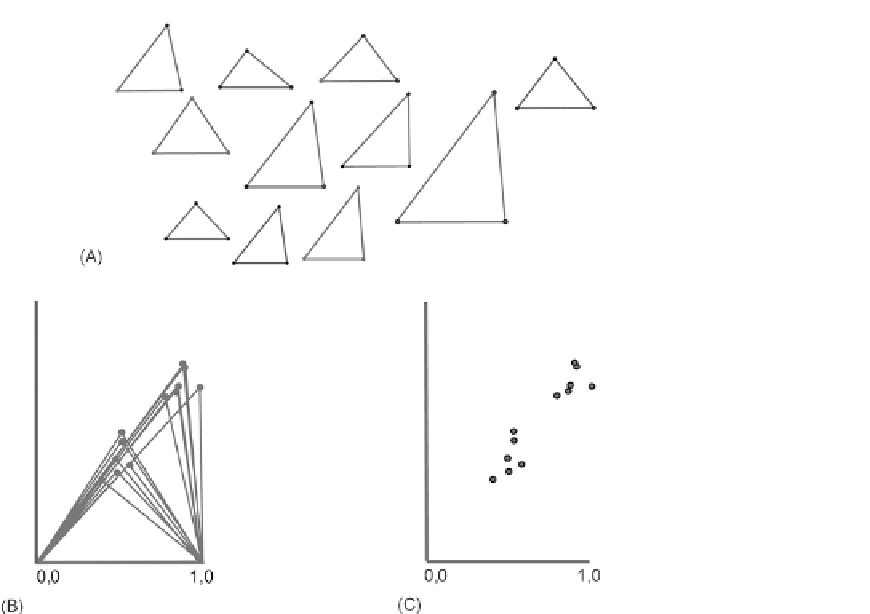Biology Reference
In-Depth Information
FIGURE 3.3
Comparing
shapes of triangles. (A) The col-
lection of triangles whose shape
differences are the subject of
investigation; (B) the same collec-
tion of triangles, put in a common
coordinate system by the two-
point registration; (C) scatter-plot
depicting the location of the free
landmark.
If you have already digitized landmarks, now would be a good time to compute shape
coordinates, scale the axes appropriately, and check that your digitizing error is circular.
Should you find points that depart substantially from circularity, you should either
delete that landmark from your analysis, or take its biased error into account in subse-
quent analyses.
When the scatter is circular, it is said to be isotropic, or uniform with respect to direc-
tion. If it is uniform at all landmark locations, the scatter (or variance) at the landmark
is said to be homogeneous. Don't worry too much at this point if the scatter in your
data isn't homogeneous, as we will discuss later, the baseline registration procedure can
produce inhomogeneity.
Multiple Triangles on Each Individual
So far we have concentrated on the simplest possible case: comparisons of a triangle.
This is because multiple landmarks can all be transformed into shape coordinates using
the formulae introduced for computing the shape coordinates of a single moveable point, C.
We just apply that same formula to all the additional points. It is not necessary to
use the same baseline for all points, but it does ease the task of reporting the changes.
Not only is the same formula applicable to the more complex case, but the same basic


